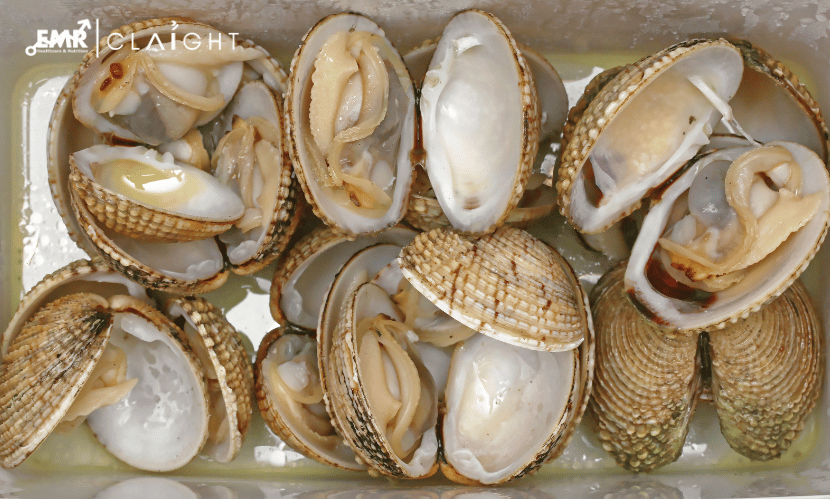Pre-packaged clams have become a sought-after product in the seafood industry due to their convenience, freshness, and ease of preparation. These products cater to a growing consumer base seeking quick and healthy meal options. With an increasing demand for ready-to-cook seafood, establishing a pre-packaged clam manufacturing plant in 2025 offers significant business potential. This article provides a detailed overview of the essential components involved in setting up such a facility, including raw material procurement, production processes, equipment requirements, regulatory compliance, and market trends.
Understanding Pre-Packaged Clams
Pre-packaged clams are fresh or frozen clams processed and sealed in hygienic, ready-to-use packaging. These products are popular among households and food service businesses due to their consistent quality and extended shelf life. Available in various formats such as vacuum-sealed packs and canned versions, they cater to a diverse range of consumer needs.
Get a Free Sample Report with Table of Contents@ https://www.expertmarketresearch.com/prefeasibility-reports/pre-packaged-clam-manufacturing-plant-project-report/requestsample
Key Components of a Pre-Packaged Clam Manufacturing Plant
1. Raw Material Procurement
Sourcing high-quality raw materials is critical for producing pre-packaged clams. Key requirements include:
- Fresh Clams: Harvested from reliable suppliers or aquaculture farms.
- Packaging Materials: Vacuum-sealable bags, cans, or eco-friendly containers.
- Additives: Brine solutions or preservatives (if applicable) to maintain freshness. Establishing a strong supply chain ensures consistent quality and availability.
2. Manufacturing Process Overview
The production process involves several key steps:
- Cleaning and Sorting: Removing impurities and sorting clams by size and quality.
- Cooking (Optional): Pre-cooking clams for specific product formats.
- Packaging: Sealing clams in vacuum packs or other containers to preserve freshness.
- Labelling and Storage: Adding product information and storing at controlled temperatures for distribution.
3. Machinery and Equipment
Setting up a manufacturing plant requires specialised equipment, such as:
- Cleaning systems for washing and sorting clams.
- Packaging machines for vacuum sealing or canning.
- Refrigeration units for maintaining cold chain logistics.
- Quality control systems to ensure product safety and compliance. Investing in advanced machinery improves efficiency and product consistency.
Market Potential for Pre-Packaged Clams
The market for pre-packaged clams is driven by several factors:
- Convenience Trends: Rising demand for ready-to-cook and easy-to-prepare seafood options.
- Health Awareness: Growing preference for high-protein, low-fat food choices.
- Global Expansion: Increasing seafood consumption in emerging markets.
Regulatory Compliance
Adhering to food safety and quality standards is essential for manufacturing pre-packaged clams. Key compliance areas include:
- Hygiene Standards: Ensuring clean and safe processing environments.
- Labelling Regulations: Providing accurate information about ingredients and nutritional values.
- Environmental Practices: Managing waste responsibly and minimising environmental impact.
Challenges in Manufacturing Pre-Packaged Clams
Some challenges faced by manufacturers include:
- Raw Material Availability: Securing consistent supplies of fresh clams.
- Shelf Life Management: Maintaining freshness and quality over extended periods.
- Market Competition: Differentiating products through innovation and branding.
Technological Innovations
Advancements in seafood processing technology have enhanced the production of pre-packaged clams. Key innovations include:
- Automated Sorting Systems: Improving efficiency and accuracy in grading clams.
- Vacuum Packaging Technology: Extending shelf life and preserving freshness.
- Sustainable Practices: Using eco-friendly packaging and waste management solutions.
Financial Planning for Plant Setup
Comprehensive financial planning is crucial for establishing a pre-packaged clam manufacturing plant. Key considerations include:
- Initial investment in land, equipment, and licensing.
- Operating costs, such as raw materials, utilities, and labour.
- Revenue projections based on production capacity and market demand.
Strategic Location Selection
Choosing the right location for the plant is essential for operational efficiency. Factors to consider include:
- Proximity to coastal areas or aquaculture farms for raw material access.
- Availability of utilities like electricity, water, and transport infrastructure.
- Compliance with local zoning and environmental regulations.
Workforce and Training
A skilled workforce is essential for maintaining product quality and operational efficiency. Key aspects include:
- Hiring experienced personnel for processing, quality control, and packaging.
- Providing training on advanced machinery and safety protocols.
- Encouraging innovation and process improvement among employees.
Environmental Sustainability
Incorporating sustainable practices enhances the plant’s reputation and operational efficiency. Strategies include:
- Recycling waste shells and by-products.
- Using energy-efficient equipment to reduce carbon footprint.
- Partnering with eco-friendly suppliers and distributors.
